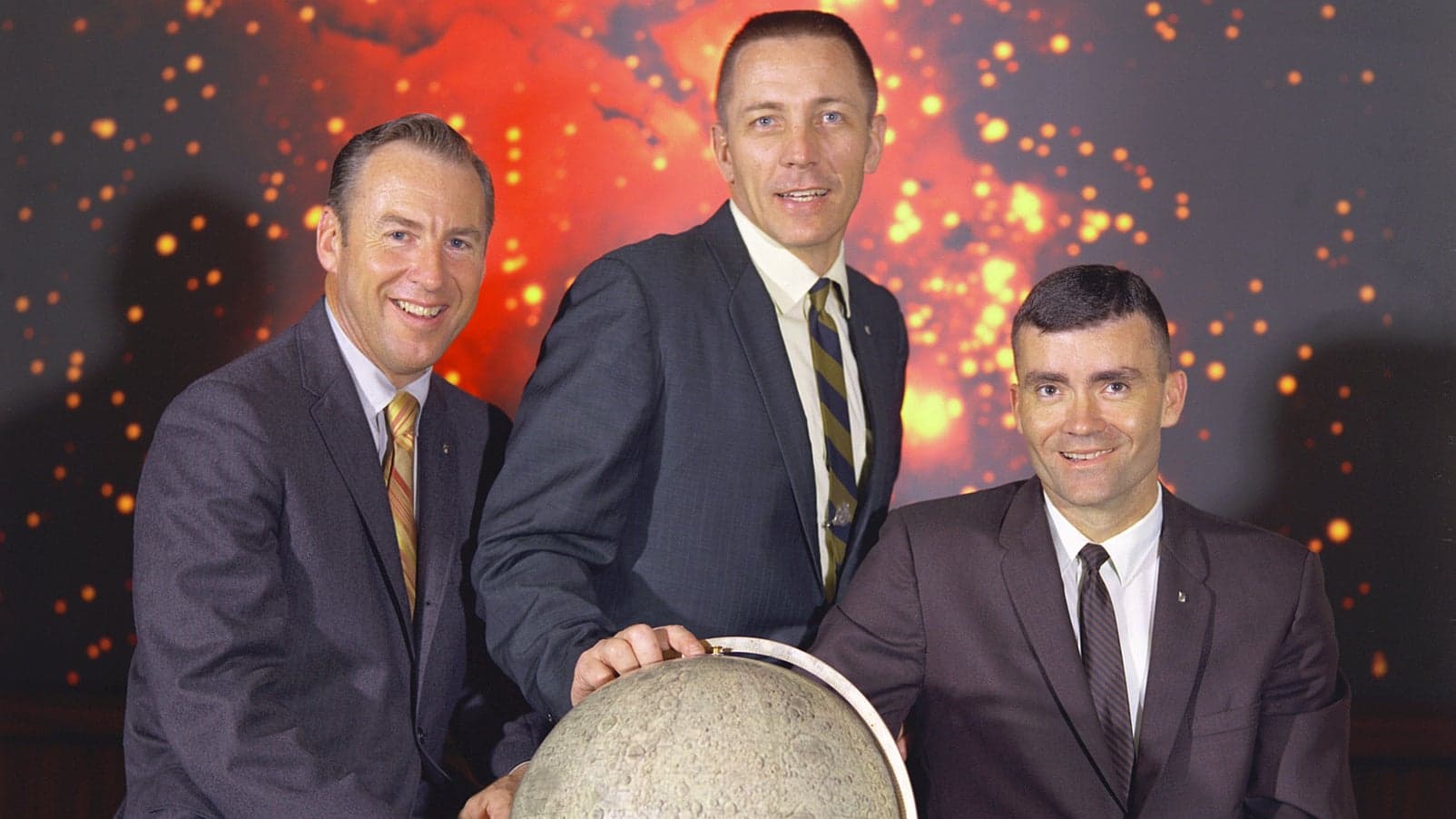On April 11, 1970, Apollo 13, the third lunar landing mission, is successfully launched from Cape Canaveral, Florida, carrying astronauts James A. Lovell, John L. Swigert and Fred W. Haise. The spacecraft’s destination was the Fra Mauro highlands of the moon, where the astronauts were to explore the Imbrium Basin and conduct geological experiments. After an oxygen tank exploded on the evening of April 13, however, the new mission objective became to get the Apollo 13 crew home alive.
At 9:00 p.m. EST on April 13, Apollo 13 was just over 200,000 miles from Earth. The crew had just completed a television broadcast and was inspecting Aquarius, the Landing Module (LM). The next day, Apollo 13 was to enter the moon’s orbit, and soon after, Lovell and Haise would become the fifth and sixth men to walk on the moon. At 9:08 p.m., these plans were shattered when an explosion rocked the spacecraft. Oxygen tank No. 2 had blown up, disabling the normal supply of oxygen, electricity, light, and water. Lovell reported to mission control: “Houston, we’ve had a problem here,” and the crew scrambled to find out what had happened. Several minutes later, Lovell looked out of the left-hand window and saw that the spacecraft was venting a gas, which turned out to be the Command Module’s (CM) oxygen. The landing mission was aborted.
As the CM lost pressure, its fuel cells also died, and one hour after the explosion mission control instructed the crew to move to the LM, which had sufficient oxygen, and use it as a lifeboat. The CM was shut down but would have to be brought back on-line for Earth reentry. The LM was designed to ferry astronauts from the orbiting CM to the moon’s surface and back again; its power supply was meant to support two people for 45 hours. If the crew of Apollo 13 were to make it back to Earth alive, the LM would have to support three men for at least 90 hours and successfully navigate more than 200,000 miles of space. The crew and mission control faced a formidable task.
To complete its long journey, the LM needed energy and cooling water. Both were to be conserved at the cost of the crew, who went on one-fifth water rations and would later endure cabin temperatures that hovered a few degrees above freezing. Removal of carbon dioxide was also a problem, because the square lithium hydroxide canisters from the CM were not compatible with the round openings in the LM environmental system. Mission control built an impromptu adapter out of materials known to be onboard, and the crew successfully copied their model.
Navigation was also a major problem. The LM lacked a sophisticated navigational system, and the astronauts and mission control had to work out by hand the changes in propulsion and direction needed to take the spacecraft home. On April 14, Apollo 13 swung around the moon. Swigert and Haise took pictures, and Lovell talked with mission control about the most difficult maneuver, a five-minute engine burn that would give the LM enough speed to return home before its energy ran out. Two hours after rounding the far side of the moon, the crew, using the sun as an alignment point, fired the LM’s small descent engine. The procedure was a success; Apollo 13 was on its way home.
For the next three days, Lovell, Haise and Swigert huddled in the freezing lunar module. Haise developed a case of the flu. Mission control spent this time frantically trying to develop a procedure that would allow the astronauts to restart the CM for reentry. On April 17, a last-minute navigational correction was made, this time using Earth as an alignment guide. Then the re-pressurized CM was successfully powered up after its long, cold sleep. The heavily damaged service module was shed, and one hour before re-entry the LM was disengaged from the CM. Just before 1 p.m., the spacecraft reentered Earth’s atmosphere. Mission control feared that the CM’s heat shields were damaged in the accident, but after four minutes of radio silence Apollo 13‘s parachutes were spotted, and the astronauts splashed down safely into the Pacific Ocean.

